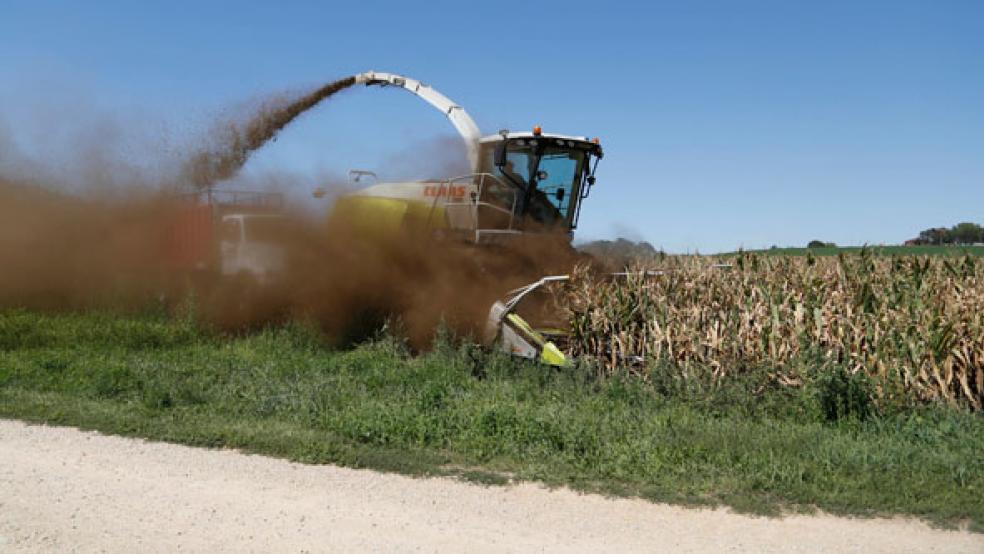It seems consumers and farmers both have a lot to complain about this year.
First we learned that food prices at groceries and restaurants were on the rise. The U.S. Department of Agriculture has forecast that prices across the board will rise from 2.5 percent to 3.5 percent over 2013 levels – with some products like meat, poultry and eggs far more costly.
That should be music to the ears of many producers, but not so fast. U.S. farmers’ overall profits are expected to decline by nearly 27 percent in 2014 after several years of historic highs, according to the USDA. And the biggest factor is one of basic supply and demand.
Related: Cautious Consumers Battle Rising Food Prices
Farmers are producing cash crops including corn and soybeans at such a high volume that it is depressing prices, The Washington Post reported on Thursday.
This year’s corn and soybean harvests are likely to be the largest in history, and the effect will be to drive down farmers’ revenues in these sectors, according to the Post. Prices this year are likely to drop by 35 percent for corn, 12 percent for wheat and 13 percent for soybeans compared to last year, according to government projections.
If this trend holds up, these crops will generate roughly $190 billion in 2014, or almost $35 billion less than in 2012, according to the USDA.
Related: Rising food, housing costs push up U.S. inflation
Thanks in part to near perfect weather, soybean stockpiles in the 2014-2015 season will be more than three times the level of a year ago, The Wall Street Journal reported earlier this week, or “by far the largest in history.” Agriculture Department economists are pegging the corn harvest this year at 14.03 billion bushels, which would top last year’s record of 13.93 billion bushels.
Here’s a perplexing question: Why are consumers paying substantially more for food and produce this year while farmers are suffering from tumbling grain prices? Shouldn’t consumers be paying less at the check-out counter if farmers are getting less for their products?
The answer, according to agricultural economists, is that there is a significant mismatch this year between what producers can demand for their products and what supermarkets and restaurants charge their customers.
“Generally over time there’s a pretty strong correlation between field crop prices and retail food prices, but this year there is a disconnect,” Richard Volpe, a USDA economist, said in an interview Thursday.
Related: Congress Sends $956 Billion Farm Bill to Obama
Currently, agricultural commodities like corn and wheat account for just 10 cents of the overall U.S. food dollar, which means there are many other factors that drive retail food prices, according to Volpe.
“In this case right now, we are seeing very strong pressure on almost all protein related foods,” he said. “We have inflation that has been high and is very high for beef, pork, poultry, fish and even eggs.”
“We have very strong demand for all these foods and we have very low inventories of cattle and hogs,” he added. “And as consumers are shifting away from these foods due to the higher prices, they are buying more poultry and more fish, so we see these prices (going) up as well.”
An additional factor: the current drought in Texas and Oklahoma that is impacting beef prices. Meanwhile, the drought in California is driving up the price of fruit, vegetables and dairy prices.
Related: Pork Prices Even Higher As Killer Virus Spreads
Gregory Ibendahl, an associate professor of agricultural economics at Kansas State University, said in an interview that while the current glut of grains and declining prices poses a serious challenge for farmers, today’s large stockpiles of corn, wheat and soybeans eventually will give way to large profits – provided the current price depression doesn’t last too long.
“You know, farmers are in a competitive market, and to me farmers are the eternal optimists,” Ibendahl told The Fiscal Times. “They always think next year is going to be the year where . . . they’re going to have a good year. They have the mindset that ‘we’re going to get through this and next year will be a better year basically.”
Top Reads from The Fiscal Times





